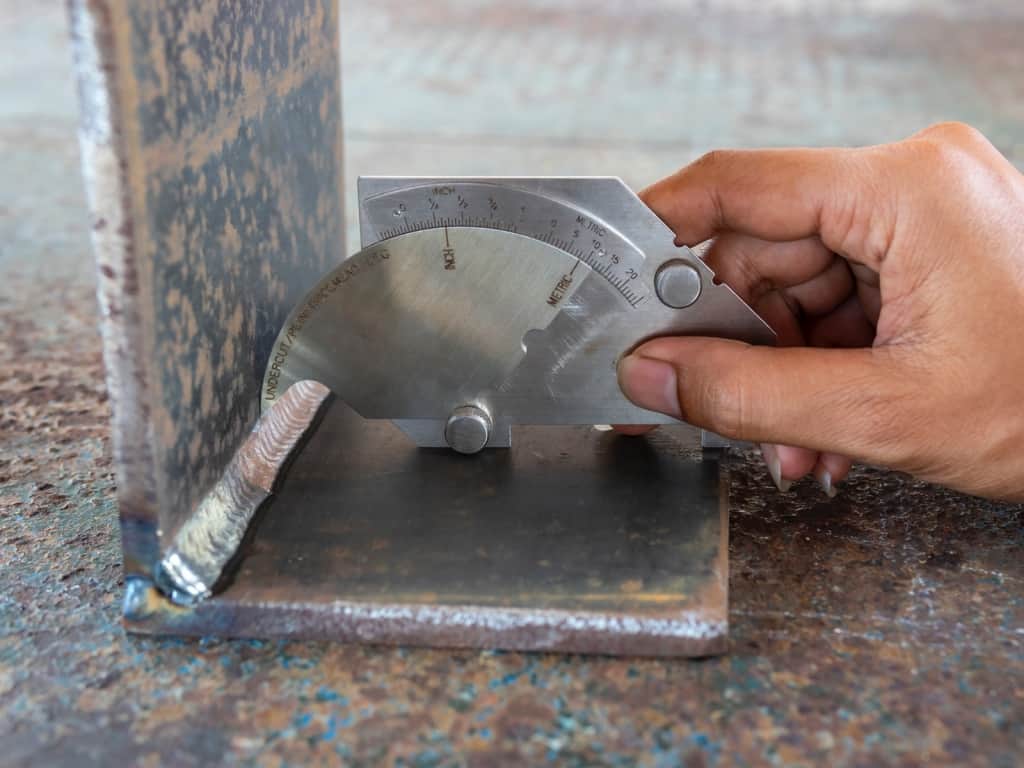Step-by-Step Guide to Preventing Weld Undercut in Different Metals
Step-by-Step Guide to Preventing Weld Undercut in Different Metals
Blog Article
Grasping the Art of Welding: Exactly How to Stay Clear Of Undercut Welding Issues for Flawless Fabrication Results
Efficiency and precision are paramount in the world of welding, where also the tiniest blemish can endanger the architectural honesty of a fabricated item. One typical challenge that welders face is damaging, a problem that can damage a weld joint and lead to expensive rework. By understanding the root creates of undercut welding and executing reliable techniques to stop it, welders can raise their craft to new levels of quality (Preventing weld undercut). In the quest of flawless fabrication results, mastering the art of welding to stay clear of undercut issues is not simply a skill however a need for those making every effort for excellence in their work.
Recognizing Undercut Welding

To stop undercut welding, welders ought to make sure appropriate welding criteria, such as adjusting the existing, voltage, traveling rate, and preserving the appropriate electrode angle. Furthermore, using the suitable welding strategy for the particular joint setup is important. Using weaving movements or backstepping strategies can aid guarantee proper weld steel deposition and reduce the probability of undercut development. Routine examination of welds during and after the welding procedure is likewise critical to capture any kind of undercut very early and make essential adjustments to stop more defects. Preventing weld undercut. By understanding the root causes of undercut welding and executing preventative actions, welders can achieve high-grade, structurally audio welds.
Reasons For Undercut in Welding
Recognizing the factors that add to damage in welding is essential for welders to generate high-quality, structurally audio welds. Damaging takes place when the weld steel does not appropriately fill up the groove formed between the base steel and the formerly transferred weld metal. Numerous aspects can result in undercut in welding. One usual reason is excessive warmth input. Welding at high temperature levels for extensive periods can result in the base steel thawing greater than preferred, bring about damage. Inadequate welding current or wrong welding rate can additionally add to undercut. Insufficient current might not supply sufficient heat to melt the base and filler steels sufficiently, while too much speed can protect against correct fusion, creating undercut. Furthermore, improper electrode angles or wrong torch adjustment methods can create locations of low weld steel deposition, promoting undercut. Comprehending these causes and applying proper welding strategies can help protect against undercutting concerns, guaranteeing sturdy and strong welds.
Methods to avoid Undercutting

To mitigate the risk of damaging in welding, welders can employ strategic welding techniques aimed at improving the top quality and honesty of the weld joints. In addition, making use of the proper welding strategy for the certain joint setup, such as weave or stringer beads, can contribute to reducing undercutting.
Furthermore, correct joint prep work, including guaranteeing clean base products cost-free of pollutants and utilizing the suitable welding consumables, is essential in preventing undercut issues. Utilizing back-step welding methods and controlling the weld grain profile can also aid distribute warm evenly and minimize the threat of undercut. Routine inspection of the weld joint throughout and after welding, in addition to implementing quality control measures, can assist in resolving and finding undercutting concerns quickly. By applying these methods diligently, welders can accomplish flawless construction results with minimal undercut problems.
Value of Correct Welding Parameters
Choosing and keeping ideal welding parameters is necessary for attaining successful additional hints welds with minimal problems. Welding specifications describe variables such as voltage, existing, travel speed, electrode angle, and protecting gas flow price that directly affect the welding procedure. These specifications should be very carefully readjusted based on the kind of product being bonded, its density, and the welding technique employed.
Proper welding parameters guarantee the ideal quantity of warmth is related to thaw the base steels and filler product evenly. If the criteria are established also high, it can bring about too much warmth input, creating burn-through, distortion, or spatter. On the other hand, if the specifications are as well low, incomplete fusion, absence of infiltration, or damaging may occur.
Quality Control in Welding Procedures

Final Thought
In final thought, understanding the art of welding needs a detailed understanding of undercut welding, its reasons, and techniques to stop it. By making sure appropriate welding parameters and applying high quality assurance techniques, flawless manufacture results can be achieved. It is necessary for welders to regularly strive for quality moved here in their welding operations to prevent undercut issues and generate top quality welds.
Undercut welding, an usual flaw in welding procedures, happens when the weld steel doesn't effectively fill up the groove and leaves a groove or clinical depression along the welded joint.To protect against undercut welding, welders ought to make certain appropriate welding criteria, such as adjusting the present, voltage, travel speed, and keeping the correct electrode angle. Insufficient welding wrong or present welding rate can you could try here also contribute to damage.To mitigate the danger of damaging in welding, welders can employ calculated welding strategies aimed at improving the top quality and integrity of the weld joints.In final thought, grasping the art of welding calls for a comprehensive understanding of undercut welding, its reasons, and strategies to prevent it.
Report this page